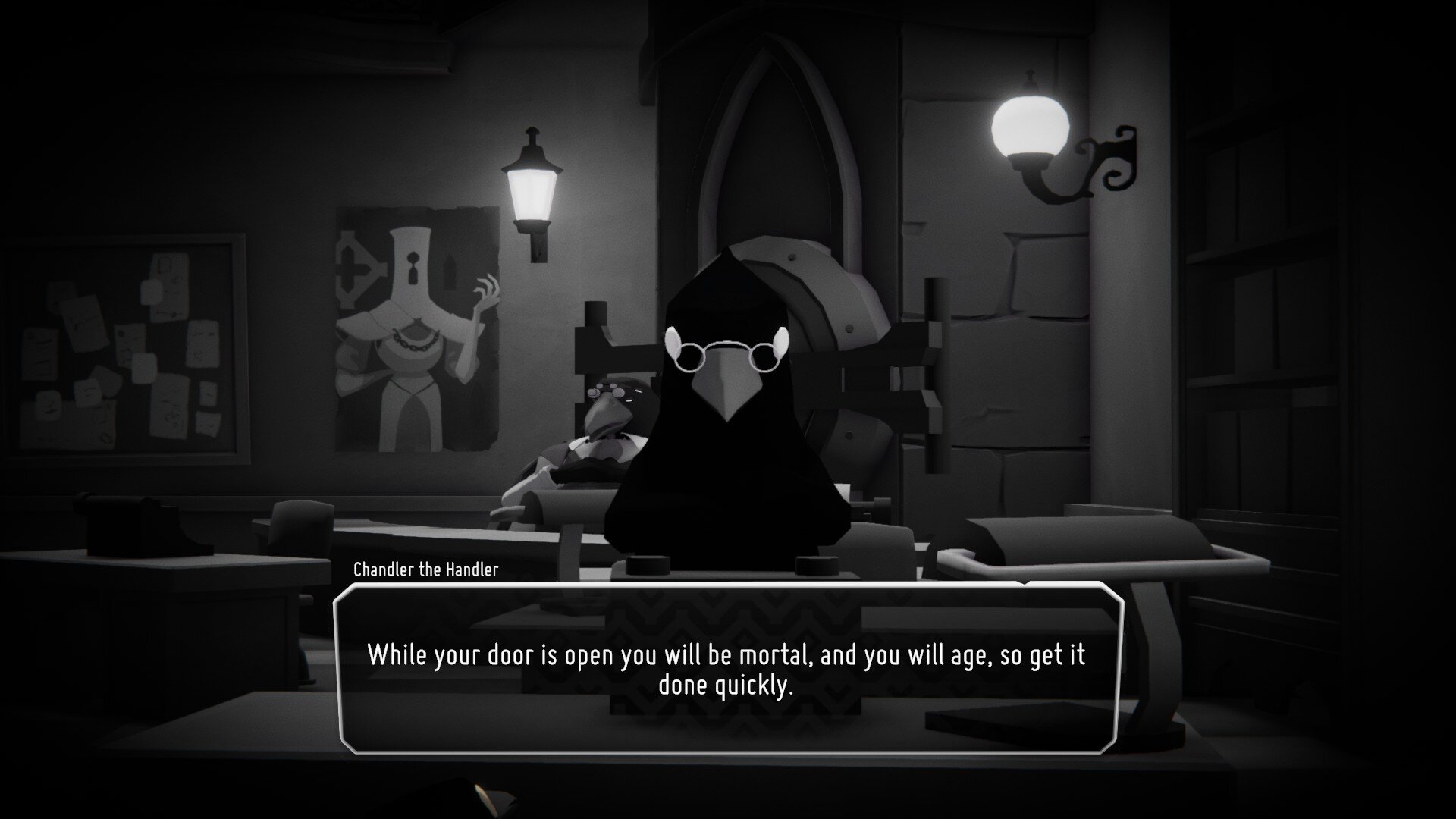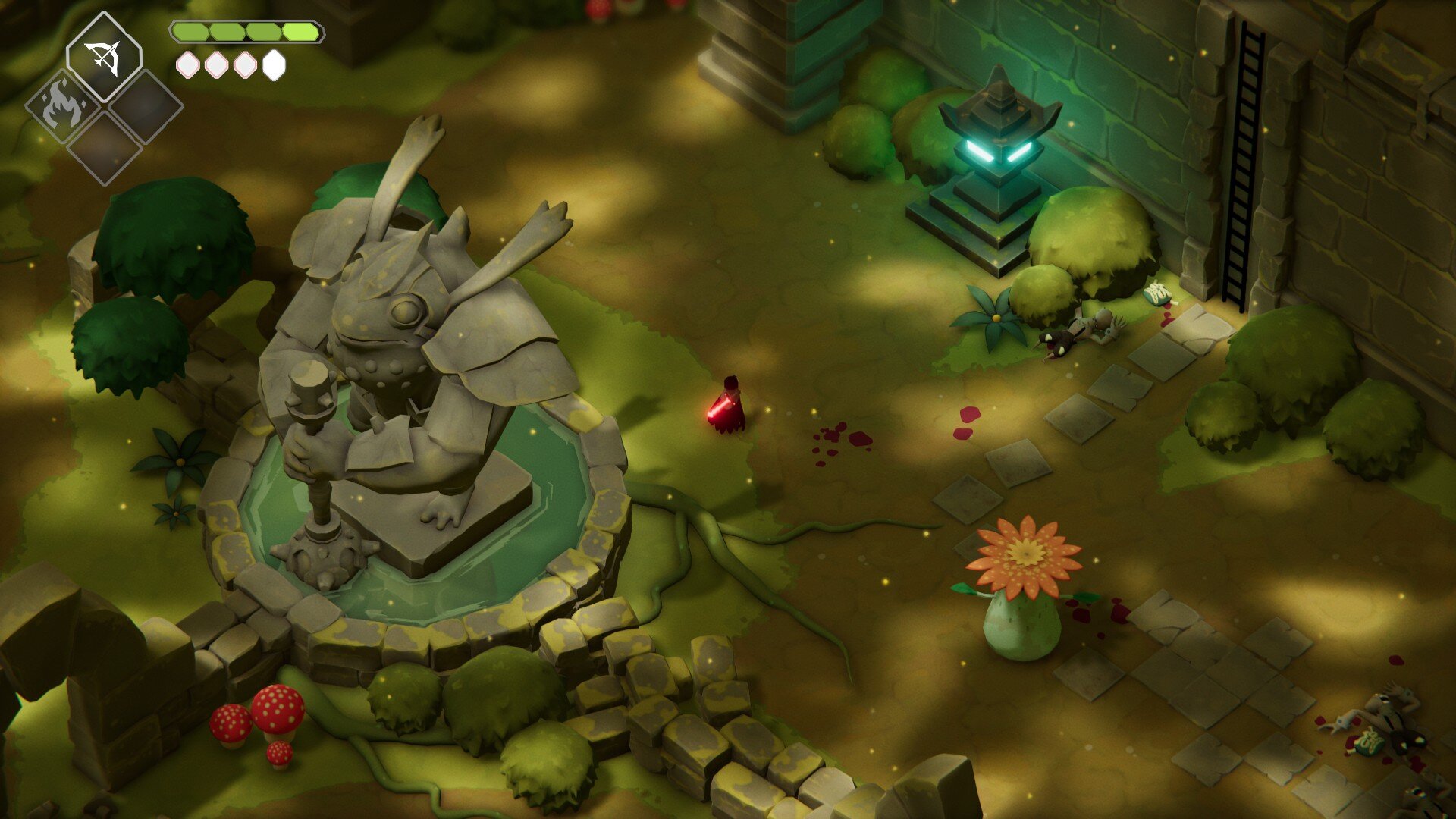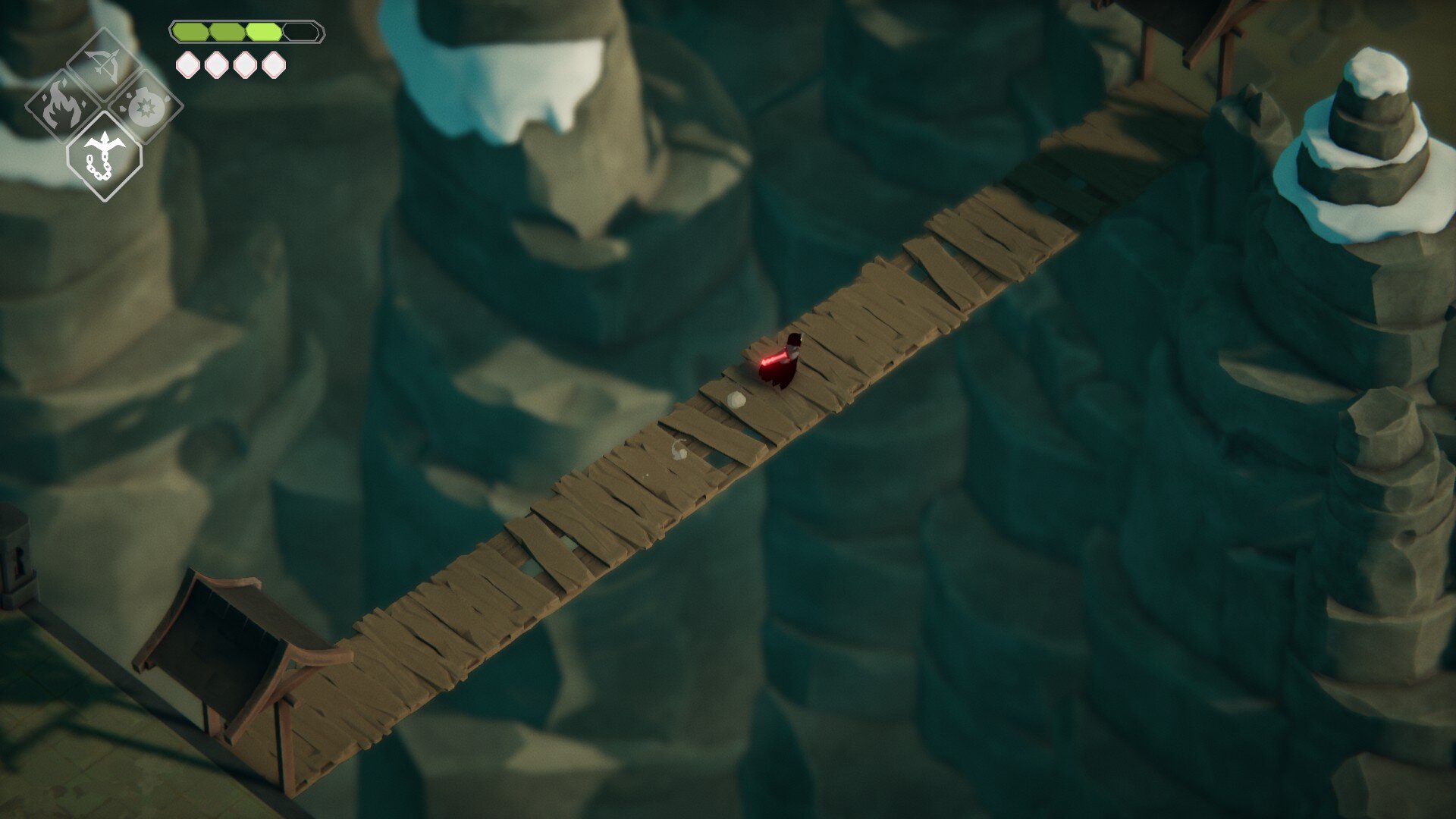Death's Door (Steam) Review
A REFINED, ELEGANT ADVENTURE
There are a few games that I’ve played over the years that nail level design so well that I find myself just flowing through the environment. Games like The Legend of Zelda: A Link to the Past, Bloodborne, and DUSK all come to mind for their excellent level design. Death’s Door, an indie action game created by Acid Nerve and published by Devolver Digital, slots nicely into that list of games with well-designed environments and, while there’s not a ton of truly new design, there is so much refinement that results in a delightfully weird action adventure. It even parodies Dark Souls throughout.
While the Link to the Past comparison fits well, Death’s Door actually reminds me more of The Legend of Zelda: The Minish Cap on Game Boy Advance. This is probably due to Death’s Door featuring a handy roll that’s great for slipping out of harm's way but the general flow of the adventure reminded me of that quirky adventure.
Death’s Door prominently features a well-designed world full of character and mystery. The levels are also full of shortcuts, fast-travel spots, upgrades, and secret collectible Shiny Things, making for a pleasant completion experience. Additionally, there are extra bosses and tasks to explore after the credits roll. As a full package, there’s a lot to enjoy in Death’s Door and most players will be able to reach 100% in about 10-12 hours. Yet, I imagine a lot of players will go for a second run to experience the adventure through a more knowledgeable lens. It’s not terribly detailed but there are some interesting story beats and world-building to parse with a few flashes of discussion-worthy philosophical ideas.
Our story begins with the exploration of a strange facility, the Reaping Commission, one that employs crows as Reapers tasked to collect souls. It’s comparable to the Time Variance Authority, or the TVA, found in Marvel’s latest Disney Plus show. Reapers are typically immortal beings but when they are on assignment and their door is open, they are mortal. After a short romp and a fun boss fight that sets the stage for future fights, our hero’s bounty is stricken away by Grey Crow, a weary Reaper who’s been stuck in the physical realm because his target escaped. Grey Crow learns that his prey is beyond Death’s Door, a legendary door that can only be opened by slamming it with immense soul energy and the only way to do that is to reap three additional Giant Souls. With the hero’s quarry being used in an attempt to open the door, the hero is also trapped in a state of mortality.
Thus, the adventure to open Death’s Door begins, one that slowly uncovers the secrets of a shady organization and unravels the ancient history of a somber world where death has been absent.
Rolling and slashing is the primary combat method, combined with various spells that function as both attacks and puzzle-solving tools and a few weapons to break up the attack speeds. It’s a fairly simple system that asks the player to string together these structured moves in a way that still feels engaging. A basic upgrade tree adds measured progress without overpowering the player and secret bosses add more power to spells. Weapons have various damage outputs and swing speeds to make them all feel unique but the player’s skill is what is really being tested more than anything. The extra weapons are optional, usually being rewards for clever problem solving while the spells open up additional rewards and paths in the expertly connected world. Spells take magic points that are regained through slashing objects or enemies, creating a thoughtful resource management system. Not only should players be aware of their magic meter but the health meter is small enough that it demands more attentive strategies.
For the entire game, I only had four hitpoints as I didn’t find enough of the shrines that boost these meters. This made me play with astute awareness that I thoroughly enjoyed. Health is regained differently too; the crow only heals through flowers planted by a Life Seed. Once planted that spot can be revisited after going through a door but it results in a lot of moments where health is extremely scarce. There’s a level of mastery required to succeed in Death’s Door but it’s rarely frustrating. I think there could’ve been a version of Death’s Door that was ultra-hard like Dark Souls but the balance of the launch version shows a level of restraint that I really appreciate.
There is no difficulty selection in Death’s Door; in some sections this is missed but it wasn’t an issue for me personally outside of a few encounters. One particular type of archer I think could use some adjustment due to its overly fast attacks but the majority of the enemies are excellent. Attacks are telegraphed well, creating a sense of awareness and reaction that few games achieve. There’s a keen understanding of combat rhythm and timing on display in Death’s Door. Enemies in their placement and timing help dictate that flow, usually coming to a crest in the Avarice challenges. These are tough, wave-based encounters and where I died the most but thankfully one can quickly retry the battle.
Dungeons are the most challenging with philosophies similar to Zelda. The goal is usually to meet with various spirits of fallen Reapers, gain a new spell after a tough combat challenge, find a boss, take them down, and reflect on their life with Steadhone, the Gravedigger. Each of the three major bosses are delightful foes that taunt the player as they explore the dungeon. For example, while trudging through the sewers, the frog boss will pop out of a portcullis to poke fun. This type of design really adds to the bosses and each fight is tough enough but not impossible for those that can recognize patterns. Patterns are usually introduced first through smaller enemies.
The game’s final boss, in particular, is a combination of pattern challenges that was fun but really tough to beat. Thankfully there are checkpoints throughout that make it so players don’t have to repeat early sections. One tip that I do have for this fight is to turn off screen shake in the options; this boss’ laser attack shakes the screen so much that it’s hard to see the other attacks. I usually dislike screen shake so I had this off for most of the game.
Visual presentation is one of the most captivating elements outside of the extremely tight gameplay and level design. Colors are well-balanced and there’s a sense of scale that shows an adept understanding of art direction. I was immediately drawn into the strange black and white world of the Reaping Commission which is contrasted by the colors found in the main world. The crow protagonist doesn’t have much of a personality but his bird-like movements are fun to watch; he has that flicky way of looking about and I was delighted to see the hero have a meal at a particular tavern. Adding to this presentation is a soundtrack full of excellent melodies with a theme that repeats at just the right moment. Subtle little piano trills and truly epic swells creates a tone that is familiar but unforgettable.
It’s a collection of music that is surprising considering that the composer, David Fenn, also worked on game design, level design, production, and sound. In fact, much of the game was created by two people with Mark Foster supplementing Fenn’s skills through game design, programming, animation, story, and writing. The pair had extra help, of course, but the game’s credits are short considering the polish this game has. Needless to say, there is assuredly an interesting tale surrounding the development of this action adventure game.
Death’s Door is a game that sparked my interest the moment I laid eyes on it but I never expected to play a game so expertly crafted. Really my only criticisms are fairly superficial and can be easily corrected with a patch. It’s important to note that I played about a week earlier than the release. Death’s Door’s performance felt a little choppy at random times both on my desktop (Nvidia GTX 1080) and my new Razer Blade 15 (Nvidia RTX 2070) laptop. I also had trouble connecting my controller which required a game reset but once it detected it things worked well. Lastly, Death’s Door doesn’t have much that we haven’t seen before in other games. This is more of a refinement of some of the best elements of top-down action-adventure and in that regard, Death’s Door is a slam dunk success.
However, I would’ve been delighted to see at least one item or mechanic that is truly unique and maybe we’ll see that in an expansion or update. A new game plus, speedrun, or additional replay modes with different costumes or something also would have been great to see. Although, there are secrets to solve beyond the final boss which adds more value to the experience.
Death’s Door is a game that shows incredible understanding of subtle components that make a game more than a sum of its parts. It’s an engaging action-adventure game that is easy to recommend. Death’s Door is a delightfully odd approach to exploring death through video games that will undoubtedly excite those who take this journey.
SCORES
GAMEPLAY - 10/10
VISUALS - 9/10
SOUND - 9/10
CONTROLS - 9/10
REPLAY VALUE - 8/10
OVERALL - 9/10
More information about Death’s Door can be found on the official website. A digital Steam copy was provided for the purpose of review. Screenshots were captured using native Steam features. Death’s Door is currently available on Xbox One/Series systems, Steam, and the Epic Games Store. Using this Epic referral link will provide a percentage of revenue share to Forever Classic Games through the Epic Creator program.
More fantasy adventure can be found in the world of NieR Replicant on PS4. We also reviewed the Musou sequel we didn’t know we needed, Hyrule Warriors: Age of Calamity on Switch. For a more traditional soulslike game, look no further than our review of the remake of Demon’s Souls on PS5.















On a path that will ultimately result in his own destruction, James Savage takes on his vampiric ex-girlfriend Draculae in El Paso Elsewhere, a moody neo-noir action shooter from Strange Scaffold.